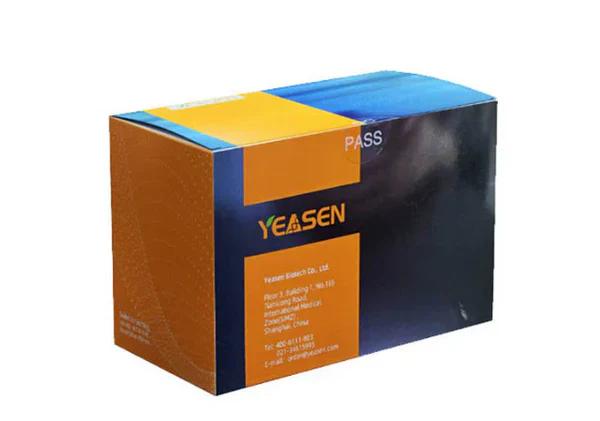Description
Phalloidin is a cyclic heptapeptide toxin derived from the death cap mushroom (Amanita phalloides). It binds to filamentous actin (F-actin) with high affinity (Kd = 20 nM) and does not bind to globular actin (G-actin). It is commonly used to label F-actin in tissue sections, cell cultures, or cell-free systems for qualitative and quantitative analysis. Phalloidin derivatives also bind to actin filaments from both animal and plant sources, including muscle and non-muscle cells, at a stoichiometric ratio of approximately one phalloidin molecule per actin subunit. Non-specific binding is negligible, providing clear distinction between stained and unstained regions. Therefore, phalloidin derivatives are particularly suitable as a substitute for actin antibodies in related research. Additionally, phalloidin derivatives are small, with a diameter of approximately 12-15 Å and a molecular weight of less than 2000 Daltons. Many physiological properties of actin are maintained, such as the ability to interact with actin-binding proteins like myosin, tropomyosin, and DNase I. Phalloidin-labeled filaments can still penetrate solid myosin matrices, and glycerol-extracted muscle fibers can contract after labeling.
Phalloidin binding inhibits the depolymerization of filamentous actin (microfilaments), stabilizing their structure and disrupting the dynamic equilibrium of polymerization and depolymerization. This property reduces the critical concentration (CC) for actin polymerization to less than 1 µg/mL, making it a potent polymerization promoter. Additionally, phalloidin inhibits the ATP hydrolysis activity of F-actin.
This product is iFluor™ 555-labeled phalloidin, which emits orange-red fluorescence. It features high brightness and photostability, strong specificity, and high contrast, offering better staining effects than actin antibodies. It is suitable for qualitative and quantitative detection of F-actin. Phalloidin-iFluor™ 555 Conjugate staining is fully compatible with other fluorescent stains used in cell analysis, including fluorescent proteins, Qdot® nanocrystals, and other iFluor™ conjugates (including iFluor™-conjugated secondary antibodies). The F-actin bound by this product maintains many biological properties of actin itself. Moreover, this product shows no species specificity and has broad applicability.
This product is provided at a concentration of 1 mg/mL.
Features
Binds selectively to filamentous actin (F-actin).
Phalloidin is not species-specific and exhibits virtually no non-specific staining, providing extremely clear contrast between stained and unstained regions.
It is highly compatible and does not affect the activity of actin.
Applications
The tight and selective binding to F-actin reveals the distribution of microfilament cytoskeleton within the cell.
Specifications
|
Molecular Weight |
~1300 |
|
Excitation/Emission |
556/574 nm |
|
Solubility |
Soluble in DMSO |
|
Structure |

|
Components
|
Components No. |
Name |
40737ES75 |
|
40737 |
Phalloidin-iFluor™ 555 Conjugate |
300 T |
Shipping and Storage
The product is shipped with ice pack. Can be stored at -15°C ~-25°C in a dark, dry environment for up to one year.
Documents:
Safety Data Sheet
Manuals
Citations & References:
[1] Wang D, Zhao C, Xu F, et al. Cisplatin-resistant NSCLC cells induced by hypoxia transmit resistance to sensitive cells through exosomal PKM2. Theranostics. 2021;11(6):2860-2875. Published 2021 Jan 1. doi:10.7150/thno.51797(IF:11.556)
[2] Guo J, Li Y, Gao Z, et al. 3D printed controllable microporous scaffolds support embryonic development in vitro [published online ahead of print, 2022 Jun 14]. J Cell Physiol. 2022;10.1002/jcp.30810. doi:10.1002/jcp.30810(IF:6.384)
[3] Yang Y, Chen HY, Hao H, Wang KJ. The Anticancer Activity Conferred by the Mud Crab Antimicrobial Peptide Scyreprocin through Apoptosis and Membrane Disruption. Int J Mol Sci. 2022;23(10):5500. Published 2022 May 14. doi:10.3390/ijms23105500(IF:5.924)
[4] Ji Q, Ma J, Wang S, Liu Q. Systematic identification of a panel of strong promoter regions from Listeria monocytogenes for fine-tuning gene expression. Microb Cell Fact. 2021;20(1):132. Published 2021 Jul 12. doi:10.1186/s12934-021-01628-w(IF:5.328)
[5] Hou Y, Wu Z, Zhang Y, et al. Functional Analysis of Hydrolethalus Syndrome Protein HYLS1 in Ciliogenesis and Spermatogenesis in Drosophila. Front Cell Dev Biol. 2020;8:301. Published 2020 May 21. doi:10.3389/fcell.2020.00301(IF:5.186)
[6] Xiong X, Yang X, Dai H, et al. Extracellular matrix derived from human urine-derived stem cells enhances the expansion, adhesion, spreading, and differentiation of human periodontal ligament stem cells. Stem Cell Res Ther. 2019;10(1):396. Published 2019 Dec 18. doi:10.1186/s13287-019-1483-7(IF:4.627)
[7] Wang X, Huang S, Zheng C, Ge W, Wu C, Tse YC. RSU-1 Maintains Integrity of Caenorhabditis elegans Vulval Muscles by Regulating α-Actinin. G3 (Bethesda). 2020;10(7):2507-2517. Published 2020 Jul 7. doi:10.1534/g3.120.401185(IF:2.781)
[8] Sheng K, Li Y, Wang Z, Hang K, Ye Z. p-Coumaric acid suppresses reactive oxygen species-induced senescence in nucleus pulposus cells. Exp Ther Med. 2022;23(2):183. doi:10.3892/etm.2021.11106(IF:2.447)
[9] Yang Z, Gao X, Zhou M, et al. Effect of metformin on human periodontal ligament stem cells cultured with polydopamine-templated hydroxyapatite [published correction appears in Eur J Oral Sci. 2021 Aug;129(4):e12816]. Eur J Oral Sci. 2019;127(3):210-221. doi:10.1111/eos.12616(IF:1.810)
Payment & Security
Your payment information is processed securely. We do not store credit card details nor have access to your credit card information.
Inquiry
You may also like
FAQ
The product is for research purposes only and is not intended for therapeutic or diagnostic use in humans or animals. Products and content are protected by patents, trademarks, and copyrights owned by Yeasen Biotechnology. Trademark symbols indicate the country of origin, not necessarily registration in all regions.
Certain applications may require additional third-party intellectual property rights.
Yeasen is dedicated to ethical science, believing our research should address critical questions while ensuring safety and ethical standards.

